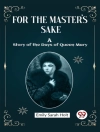In ‘On the Fringe of the Harbor, ‘ John Arthur Barry masterfully examines the lives of marginalized individuals within a coastal town, weaving a rich tapestry of human emotion and social critique. The novel, set against the backdrop of an ever-changing maritime landscape, employs a lyrical prose style that mirrors the ebb and flow of the tides, creating a rhythm that draws readers into its poignant narrative. Barry’s exploration of themes such as isolation, resilience, and the search for belonging reflects the broader social currents of early 20th-century literature, making it a significant contribution to the genre of coastal realism. John Arthur Barry, a keen observer of human nature and a product of both rural and urban life, likely drew on his own experiences and the socio-economic challenges of his time to craft this compelling tale. His background in sociology, coupled with his passion for the sea, informs the depth of character development and social commentary present in this work. Barry’s fascination with the intersection of personal and communal identities creates a resonant exploration of how individuals cope with adversity. For readers seeking a nuanced portrayal of life on the fringes, ‘On the Fringe of the Harbor’ is an essential read. It promises not only to engage you with its beautifully crafted narrative but also to provoke thoughtful reflection on the human condition. This novel is a rich resource for those interested in the complexities of society, making it a valuable addition to any literary collection.
Sobre el autor
John Arthur Barry (1850–1911) was an esteemed English-born Australian author primarily recognized for his vivid portrayals of maritime life and the Australian frontier. His work is a rich tableau of the seafaring world and the rugged Australian landscape of the late 19th and early 20th centuries. Barry’s literature captures the adventurous spirit of the times, entwining tales of the sea with the social fabric of colonial Australia. His novel ‘On the Fringe of the Harbor’ is a notable example of his literary prowess, showcasing his characteristic narrative style that blends authenticity and romanticism. Barry’s writing often reflects his personal experiences at sea, giving a voice to the ethos of the maritime community and settlers of his adoptive country. His contribution to Australian literature is significant, bridging the gap between the colonial period and the burgeoning nationalism of the early 20th century. Barry’s work is not only of literary merit but also serves as a historical document, providing insights into the lives and sentiments of those who lived during a transformative era in Australian history.












